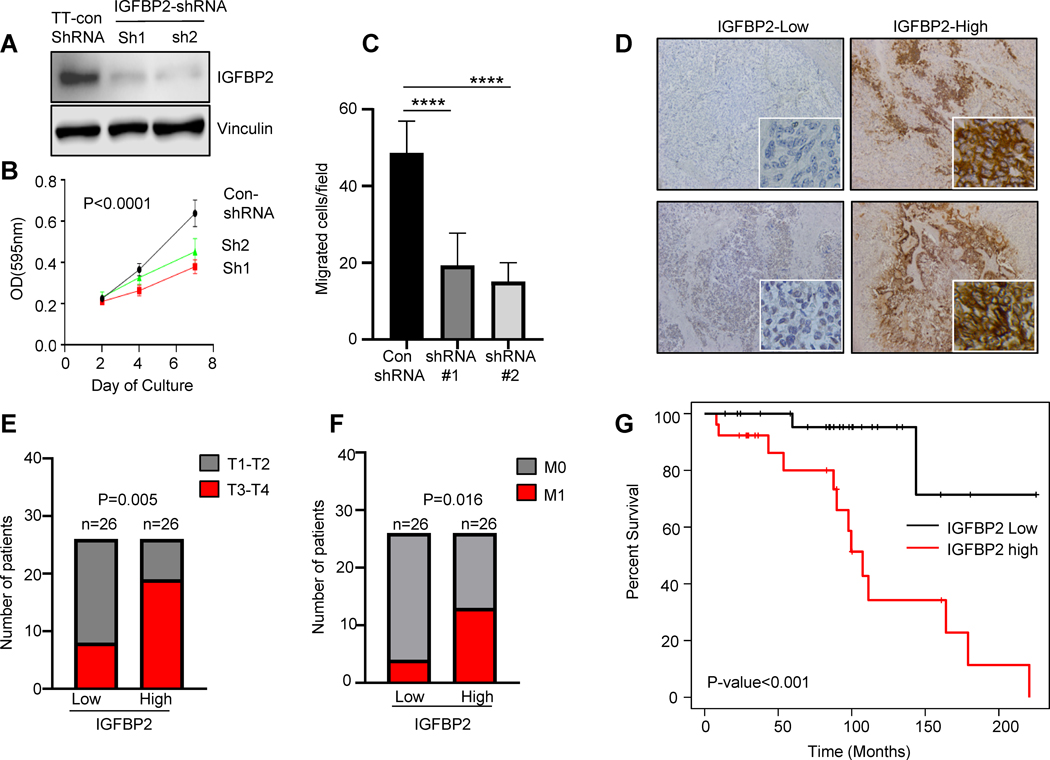Figure 2.
High IGFBP2 expression is associated with an aggressive phenotype in MTC. A) TT cells were stably transduced with lentiviral shRNA vectors targeting IGFBP2 (sh1 and sh2) or non-target shRNA, and knockdown efficiency was determined by western blot analysis. B) IGFBP2 knockdown decreased the survival of MTC cells. The cell viability of two stable shRNA-IGFBP2 clones was analyzed by MTT assay. Data are representative of three independent experiments: error bars, ±SD (n=3) OD, optical density. C) IGFBP2 knockdown decreased the migration of MTC cells. Data are representative of three independent experiments. Error bars, ±SD (n=3). D) Representative immunohistochemical analysis of IGFBP2 in primary MTC tumors (n=52). Magnification, 20x. E) Association of high IGFBP2 expression with high tumor category (n=52). F) Association of high IGFBP2 expression with metastasis of MTC (n=52). G) High IGFBP2 expression is associated with poor overall survival. Kaplan-Meier survival analysis of 52 MTC primary tumors (P=0.0004, log-rank test). *P<0.05, ***P<0.001,****P<0.0001.

